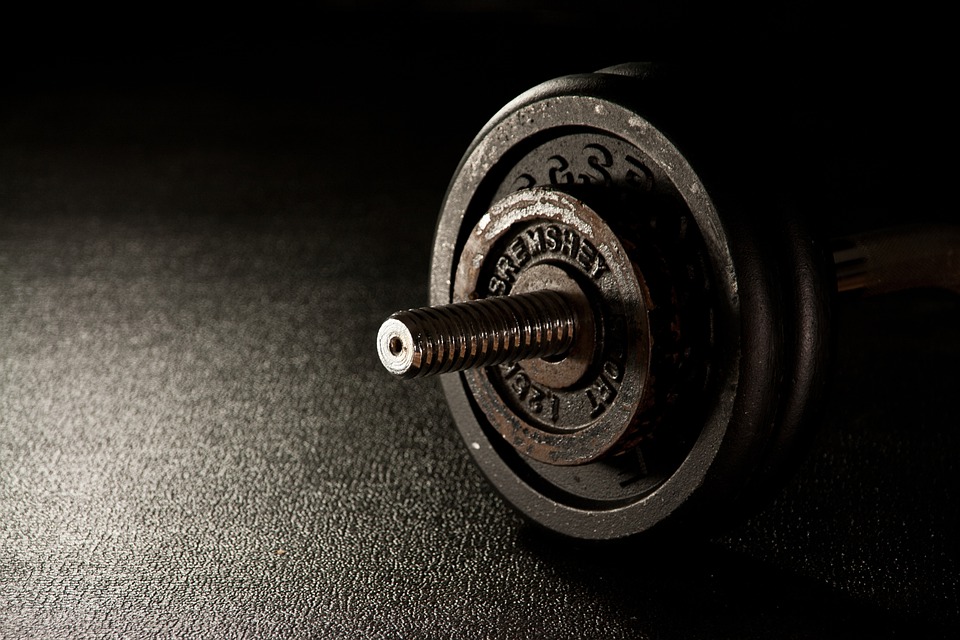
What is Training for Failure?
This is a process of lifting a given weight until you can no longer produce enough force to move it properly. This means that you can no longer move the weight on your own and must either stop or use help to keep moving. It’s important to remember this as we continue because it will affect everything else we talk about today. People often misunderstand what it means to train until failure.
The muscle failure you experience is relative to the specific weight you are lifting. If you don’t take a break from lifting weights, you will eventually have to stop. However, you may be able to remove some of the weight and continue. This is a common technique called drop sets.
For example, say you’re bench pressing 275 pounds. You reach failure on the 8th rep, but instead of resting, you remove a couple of 15-pound plates and continue.
Your muscles are not completely exhausted, but their performance decreases for a period of time.
Training to Failure: The Newest Study (and What Older Studies Suggest)
More and more attention has been given to training for failure in recent years. There are now multiple studies investigating this issue in an attempt to find a clear answer.
It can be difficult to study training to failure because researchers have to rely on subjects’ self-reported data. Studies have shown that people tend to underestimate how much effort they are putting into their workouts.
The subjects in that study were asked to pick a weight they thought they could lift ten times. 35 out of 160 subjects failed at the 10-12 repetition range. Everyone else did 13+ repetitions before reaching failure.
The Australian Institute of Sport is the first to publish a paper on failure training. There were 26 male soccer and basketball players between the ages of 16 and 18 who participated in the study. They had all been strength training for at least six months. They were split between two groups for the bench press test:
- Group 1 did four sets of 6 reps to failure.
- Group 2 did eight sets of 3 reps, but did not to failure.
Both groups trained in the bench press three times per week for six total weeks, with the goal of increasing their strength. The researchers found that the group that had failed at their previous attempt managed to gain up to 5% more power and strength than the group that had not failed.
This is the second study to come from the University of Tsukuba in Japan. The researchers in the study looked at the effect of metabolism on stress and how it affects hormones and muscle development. They found that students who participated in the failure training program were more likely to believe that their efforts would pay off, even if they failed. The research found that students who participated in the failure training program were more likely to believe that their efforts would pay off, even if they failed. The researchers had their subjects perform three exercises – lat pulldown, shoulder press, and bilateral knee extension. They split the twenty-six men into two groups:
- Group 1 performed 3 to 5 sets of 10 repetitions (to failure) on each exercise with a minute of rest between sets. Standard training protocol.
- Group 2 did the same amount of volume; only they took 30-second breaks in the middle of each set to dissipate some of the metabolic fatigue. Thanks to these brief rests, they didn’t reach failure.
Group 1 saw more significant gains in muscle than Group 2, as well as more isometric strength, and improved their 1-repetition maxes by a larger margin than Group 2. Group 1 also showed more significant improvements in their muscular endurance.
A paper from 2016 studied the existing evidence to try and determine if failure training is effective. The researchers found that failure training wasn’t necessary for beginners, but it appears to be beneficial for more advanced learners.
This idea is correct because those who are new to exercise see significant progress with relatively easy training because they aren’t used to the stress of exercise. As we become more advanced, it takes longer for new growth to happen, and we need to work harder to keep improving.
Here is a direct quote:
However, performing HI-RT without repetitions to failure may limit the potential for gains in muscle strength and mass. There is more evidence of increased muscle strength in individuals who are trained and perform HI-RT to muscle failure, than those who do not perform to failure.
To the Books, Robin!
When I wasn’t busy watching 1960s Batman re-runs as a college strength coach, I used to try to read books on exercise physiology and athletic development. Formerly, college strength coaches and barbell sports specialists would engage in extensive conversations about sports science textbooks.
It’s possible that they still do and I simply don’t take notice anymore. A number of these textbooks have been translated into English by Russian scientists and coaches. The translations of the manuals have led to confusing language in many of them. The books written in the States typically contain complex theoretical ideas that can be difficult to apply to daily training.
Reverends who are knowledgeable about strength will tell you that these books are still worth reading. You don’t have to read them. There are modern coaches who have taken ideas from classic references and created more practical articles, books, and YouTube videos.
The “reptons effort method” is an idea that can help you become stronger, according to Vladimir Zatriorsky. Repton’s effort is one of the three ways that has been shown to increase strength.
Keeping the weight at a submaximal level and completing as many reps as possible is the best way to ensure accuracy in practice. The study found that during the last few reps before the muscle fails, the body is trained to develop the maximum force possible even when fatigued.
You need the correct amount of mechanical stress to build muscle, which is determined by the amount of time the muscle is working. Other metabolic factors also contribute to muscle growth. One study showed that doing multiple sets with weights that are close to but not above your capacity to repeatedly perform, yields outcomes that are almost equal to working out until you reach failure.
The real benefit of reps to failure is that it forces your muscles to work harder. You cause the motor units consisting of muscle fibers and the nerves that cause them to contract to fatigue.
You only use a portion of the muscle to lift the load. If you were to use submaximal weights and perform moderate rep ranges, you would never activate all of the motor units. Making people come online is a good thing because it makes them use their capacity.
People Are Different
You need to determine what an appropriate submaximal weight is before you can start training using any of the method’s variations. Coaches will make recommendations based on percentage ranges and guidelines they observed from Olympic athletes.
I used to think that the percentage of 1RM that you’d assign to sets in the main compound lift mattered, but it did nothing but show my inexperience.
Gaining experience reveals the vastness of humanity and how unique each group of people can be. Some people can do more repetitions at a higher percentage of their max than the guidelines in sports science books would lead you to believe. Even for weightlifters who have been lifting for a while and have a consistent technique, their maxes might not change much from month to month.
How many repetitions someone can do in a given set and how close to their max the weight can be is influenced by:
- Gender
- Total training age
- Athletic background
- The muscle fiber type that they inherited
- The variety of activities they did most as children and young adults
WOMEN: Women can generally handle higher repetitions (volume) at higher percentages of their one-repetition maximum (max). The reason for this is that the football player will have been lifting weights for three years, while the cross-country runner will only have been lifting weights for one year. The difference in reps between a college football player and a college cross country runner can be explained by the fact that the football player will have been lifting weights for three years by the time they reach college, while the cross country runner will only have been lifting weights for one year. The results of this study need to be further tested on different populations and even on an individual basis.
Use Feel and Judgement Wisely
If you’re just starting to lift weights, doing one set of each exercise until you can’t do anymore probably isn’t the best plan. Working out excessively can be a way to tire yourself out without being productive. It can also be dangerous. But some methods of self-regulation still cause the same physiological changes. We’ll go through a few.
- Technical Max Sets Based Off Main Sets: Getting the weight correct will be done by trial and error, but it is a more accurate method than using something on a rated scale. For this, you would do one set of max reps based on the weight that you used for your top set after your planned work sets are complete. Whether the day called for you to work up to a heavy set of 5 for the day, or you did straight sets of 5 reps at 80% of an actual 1 rep max makes little difference. With either, you are basing your set to failure off your level of readiness for that day.
- Rest-Pause Sets: This training approach was taken from bodybuilding first. I learned how it could also be modified and used for strength development from top powerlifting coach, Josh Bryant. If your goal is to use training to fail for muscle growth or increased strength capacity, it is a wiser, strategic method than doing reps until you crap out.
For this, you’d pick a lift and:
- Do one set of 2-3 reps short of failure, using your judgment to determine when you feel as if you could only do 2-3 reps more if you tried.
- Stop and rest for 20 seconds
- Then do a set with the same weight 1-2 reps short of failure.
- Rest twenty seconds.
- Do one last set to failure.
Should You be Training to Failure Every Set?
Although it may seem counterintuitive, too much of a good thing can actually be harmful. If you train too much, you will overtrain. The same is true for failure training. There is evidence to suggest that yes, it is beneficial and leads to better progress. But it’s a tool that should be used carefully.
The issue of ATP.
We should not aim to destroy or eliminate when we are training. Our goal should be to encourage or stimulate. Pushing your muscles to their limits on a regular basis will result in them becoming stronger.
To start with, there is the problem of adenosine triphosphate (ATP) – the body’s main source of energy. – by providing energy for our muscles to contract ATP provides energy for muscles to contract, allowing us to do physical tasks like running and lifting weights.
The amount of time our muscle ATP reserves last during challenging weight training depends on how heavy the weights are but is usually less than 30 seconds.
A set that is moderately challenging will use up more than half of the ATP that is stored in the muscles and it can take up to several minutes for the ATP to be resynthesized. If you lift weights until your muscles are completely exhausted, it will use up all of your muscle’s ATP stores. The ATP is not restored as quickly as it would be if the individual was not working out.
In one study, researchers found that sets taken to failure exhaust our muscle ATP reserves. They speculate that the ATP deficit contributes to fatigue (which sounds logical).
The question of how muscle protein breaks down and if this leads to overtraining.
We have long understood that the key to gaining muscle and strength lies in achieving the perfect balance of training stimuli – not too little and not too much.
If we want to create a strong enough stimulus, we need to take some sets to failure. However, if we try to do too much at once and train until we can’t continue, we might damage our muscles, causing them to break down more protein, and making us more likely to overtrain.
Some research supports this. In the researchers’ own words:
Training to failure should only be performed sparingly as it carries a higher risk of injury and overtraining.
Research has found that too much training to failure reduces rates of muscle protein synthesis, which is critical for the growth and development of muscle mass. Aside from the muscle damage, another possible reason for the pain is probably the rapid depletion of glycogen.
If you don’t take breaks and rest, you will get tired and your technique will suffer. This will make you more likely to get hurt.
As was discussed earlier, fatigue has an effect on the biomechanics of various exercises. The reason for this is that different muscle groups involved in a movement can become tired at different speeds. If a muscle becomes too tired, other muscles have to kick in and make up for the loss of force.
If you are too tired to squat, your posterior chain will have to work harder to compensate, which often leads to the Good morning squat. If you have poor technique, you are more likely to get injured.
Instead of doing full squats, some people do quarter squats, which reduces the range of motion and defeats the purpose of training. I mean, why bother at that point? You’re only ego-lifting.
A set to failure here and there is excellent. If you do too many reps in a row, you will get tired and your technique will suffer.
It’s very demanding on the mind and nervous system.
Training to fail all the time might sound great at first, but you may not be able to manage it when you’re no longer motivated and energetic. At first, working out may seem like a breeze. However, after a few workouts, you may find yourself dreading the next exercise.
You can only push yourself to your absolute limits for a finite amount of time. Sadly, it’s not a good long-term strategy.














